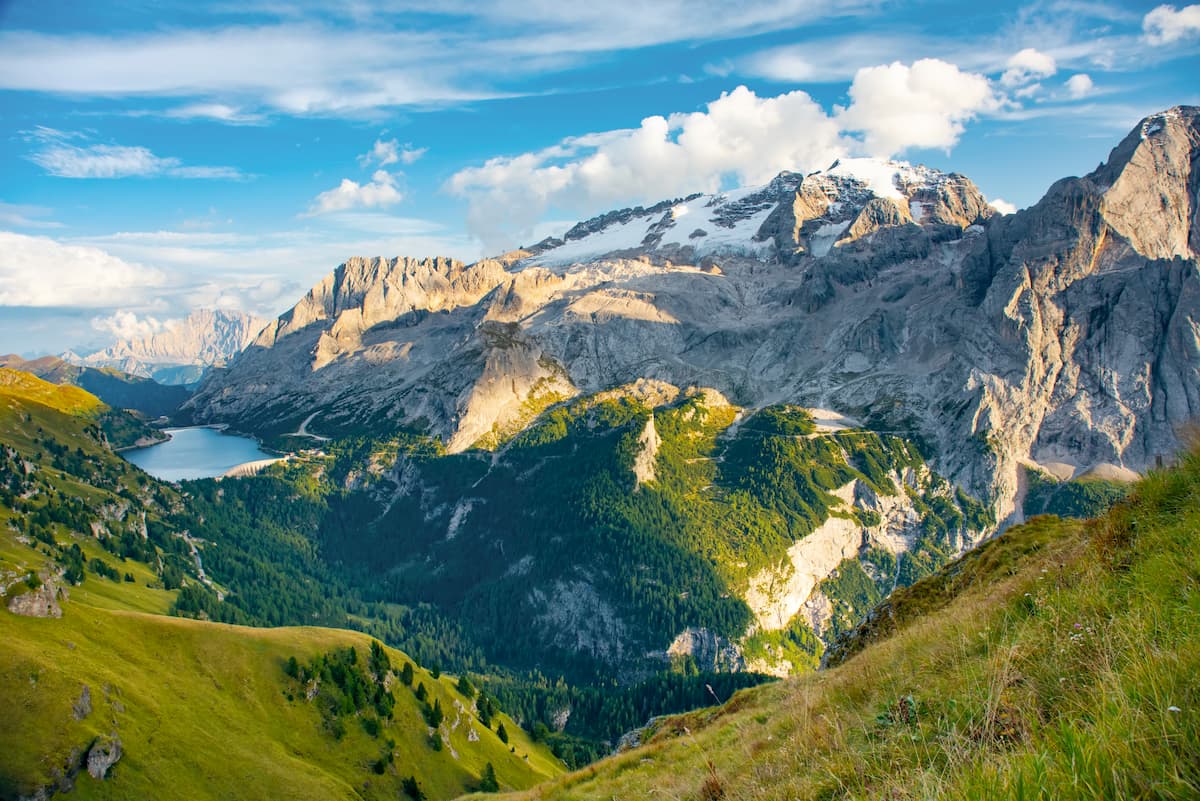Get PeakVisor App
Sign In
Search by GPS coordinates
- Latitude
- ° ' ''
- Longitude
- ° ' ''
- Units of Length

Yes
Cancel
Share ×

Scan the QR code and open PeakVisor on your phone
❤ Wishlist ×
Choose
Delete
From the plains of the Po Valley to the jagged peaks of the Dolomites, there are plenty of different landscapes for hikers to experience in the Italian region of Veneto. There are 2560 named mountains in Veneto. The highest and the most prominent mountain in Veneto is the famous Marmolada (3,343 m/10,968 ft).
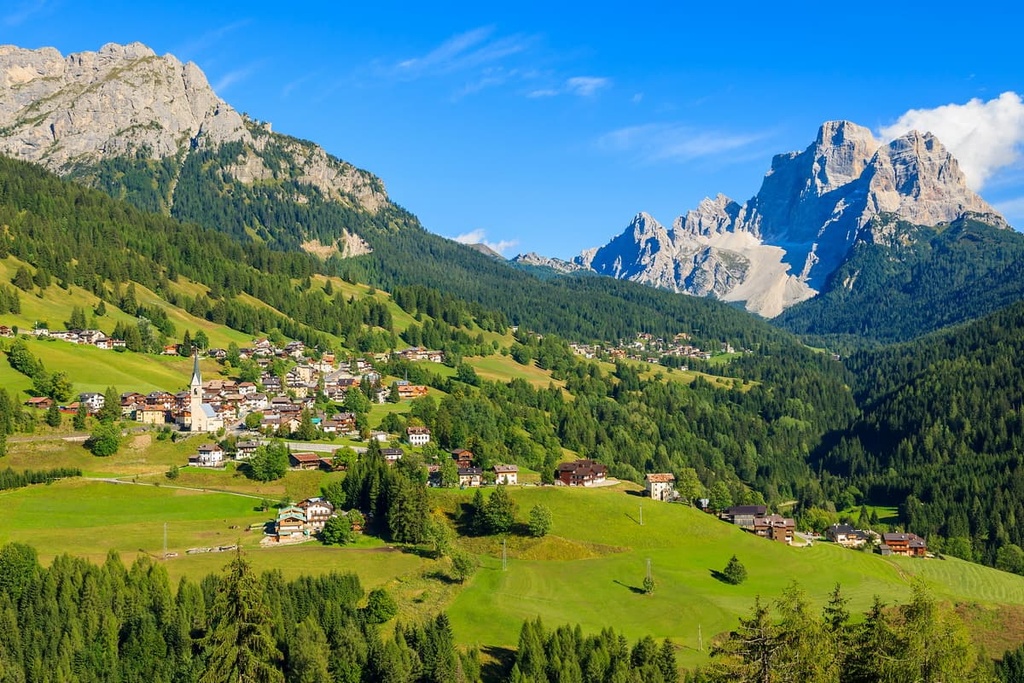
Veneto (Vèneto) is Italy’s eighth-largest region as it has a total area of 18,345 sq. km (7,083 sq. mi). The region is located in the northeastern part of Italy, and it borders Friuli Venezia Giulia to the east, Emilia Romagna to the south, Lombardy to the west, and Trentino-Alto Adige/South Tyrol to the north. It even has an international border with Austria, which is located to the north.
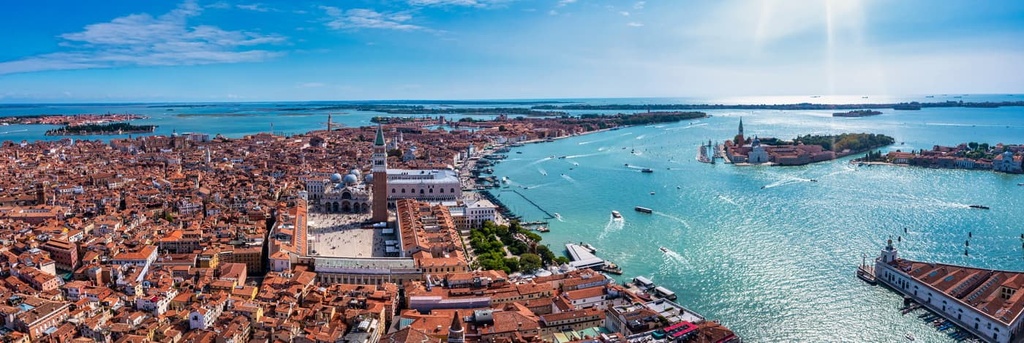
The region of Veneto is home to around five million people, so it’s Italy’s fourth-largest region in terms of population. Venice is the regional capital, although Verona is the largest city by population in Veneto. The region encompasses the provinces of Venezia (Venice), Padova (Padua), Rovigo, Verona, Vicenza, Treviso, and Belluno.
Veneto’s landscape includes jagged mountains, low-lying hills, and the plains of the Po Valley. The mountains are situated along the region’s northern border and amount to 29 percent of the region’s terrain. The plains of the Po Valley cover 57 percent of the region, while the low hills, which are used for wine cultivation, make up the remaining 14 percent of Veneto.
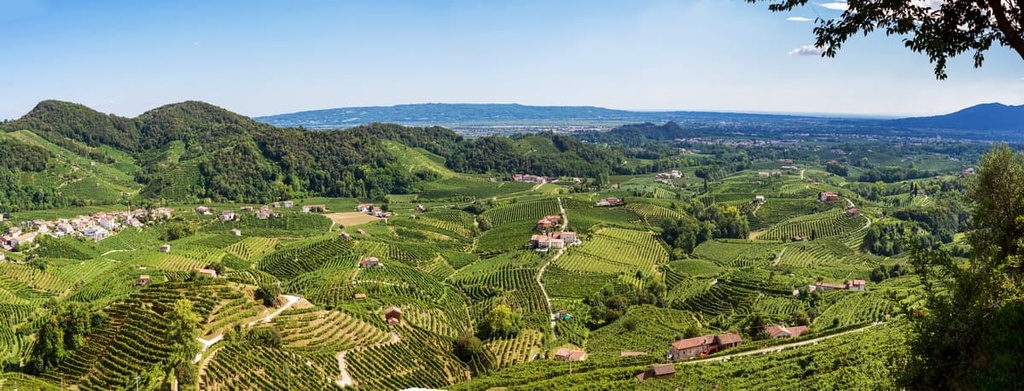
The Po Valley is divided into higher and lower plains. The lower plain is where most of the region’s population is based, and it is the site of most of Veneto's agricultural production. Conversely, the higher plain is gravel-strewn and is not very fertile.
Several rivers run through Veneto, including the Po, Adige, Brenta, Bacchiglione, Livenza, Piave, and Tagliamento. Veneto is also home to the eastern shore of the stunning Lake Garda.
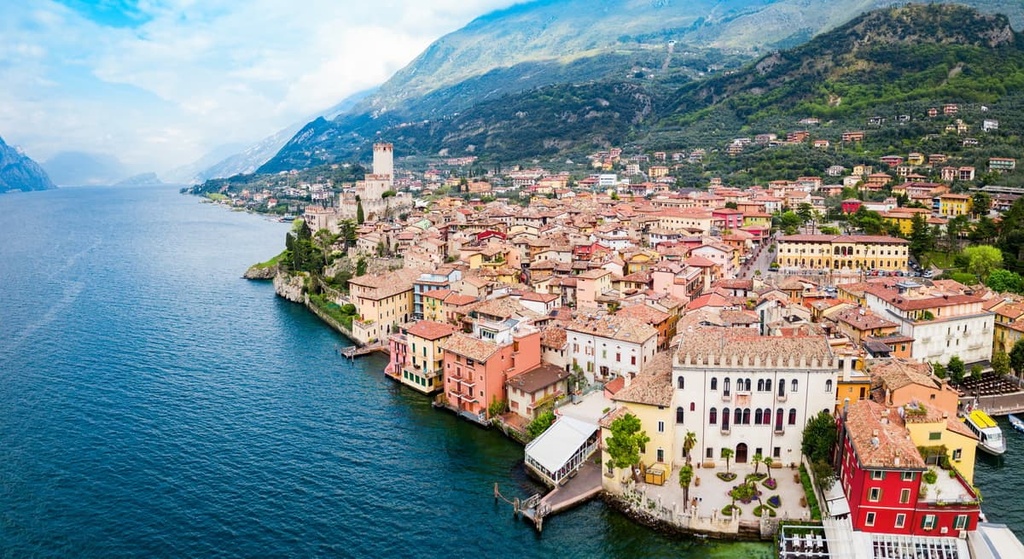
Veneto’s borders extend to the Adriatic Sea where it encompasses 200 km (124 mi) of coastline. The Venetian Lagoon, which lies along the coast, is characterized by its marshes and islands. Below the lagoon lies the Po Delta, which features sandbars and dunes.
Within Veneto, there are a number of protected areas, including the famous Dolomiti Bellunesi National Park, which is a designated UNESCO site that’s known for its rich biodiversity.
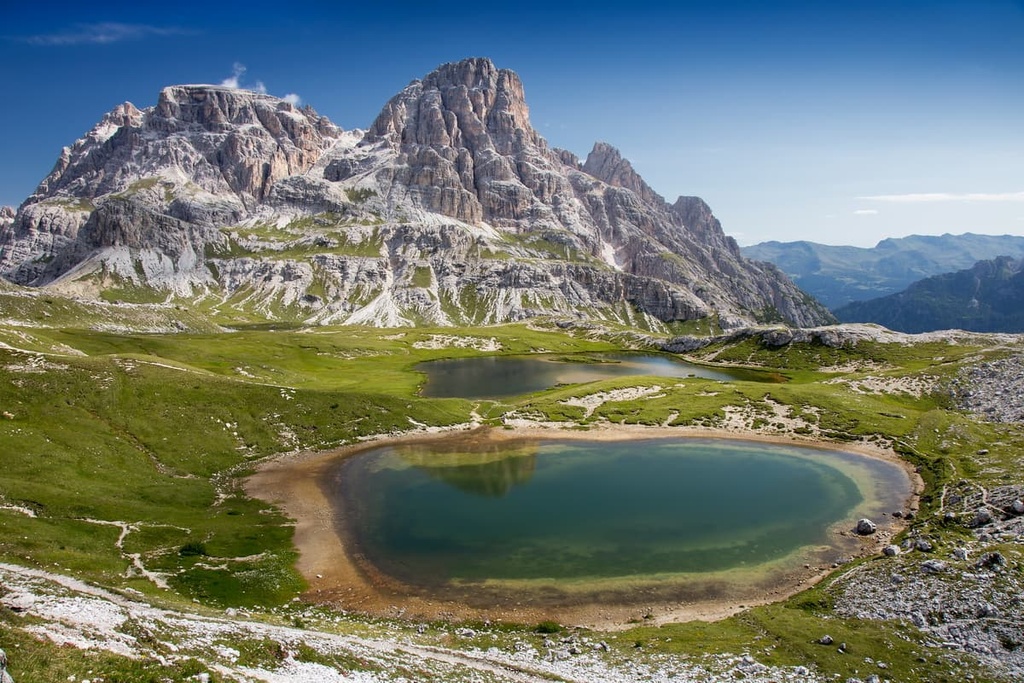
Veneto also contains five regional parks (Colli Euganei, Delta del Po Veneto, Dolomiti d’Ampezzo, Fiume Sile, and Lessinia), one local park (Parco dell’Adige), fourteen state reserves, six regional reserves, and numerous Natura 2000 sites.
As it is dominated by the plains of the Po Valley to the south and bordered by mountains to the north, Veneto is an incredible place for geologists. The region is also home to numerous mountain ranges, including the Carnic Alps, Eastern Dolomites, and Venetian Prealps, which together make up 29 percent of the region’s total territory.
The highest massif in Veneto is that of Marmolada, which has a summit that stands at 3,343 m (10,967 ft) in elevation. Although the massif is mostly located within Trentino-Alto Adige, the smaller, eastern part is situated in Veneto.
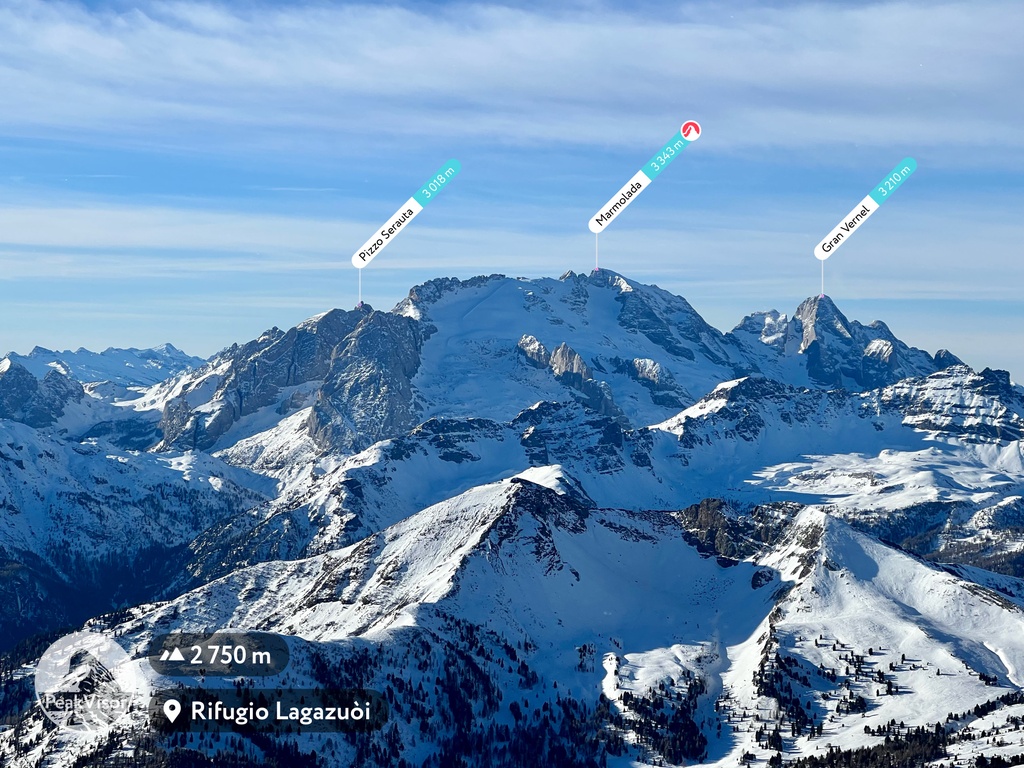
Unlike other mountains in the Dolomites, which are largely composed of the rock dolomite, the Marmolada massif is mostly made up of limestone. The northern side of the massif boasts a large glaciated slope, whereas the southern side is a vertical wall that stands at over 1,000 m (3,280 ft) in elevation.
The Marmolada massif consists of several peaks, including:
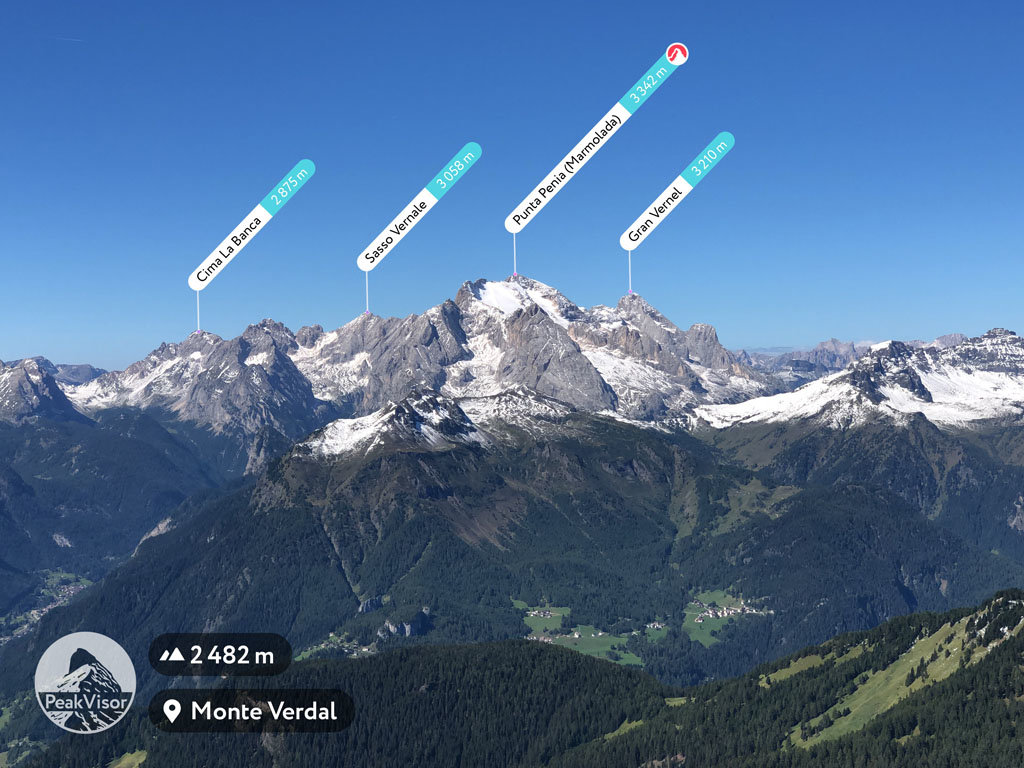
Another impressive geologic formation that sits on the border between Trentino-Alto Adige and Veneto, is the Tre Cime di Lavaredo. The Tre Cime di Lavaredo consists of three sharp dolomite towers that jut into the sky. These peaks serve as one of the most famous symbols of the Dolomites.
Veneto’s mountains, like the rest of the Alps, feature rocks that formed millions of years ago from the accumulation of sediments in the ancient Tethys Sea. The Alps then formed during the collision between the African and European tectonic plates around 66 million years ago as part of the Alpine orogeny. Since then, glacial, water, and wind erosion have continued to shape and form the rock that’s in the range to this day.
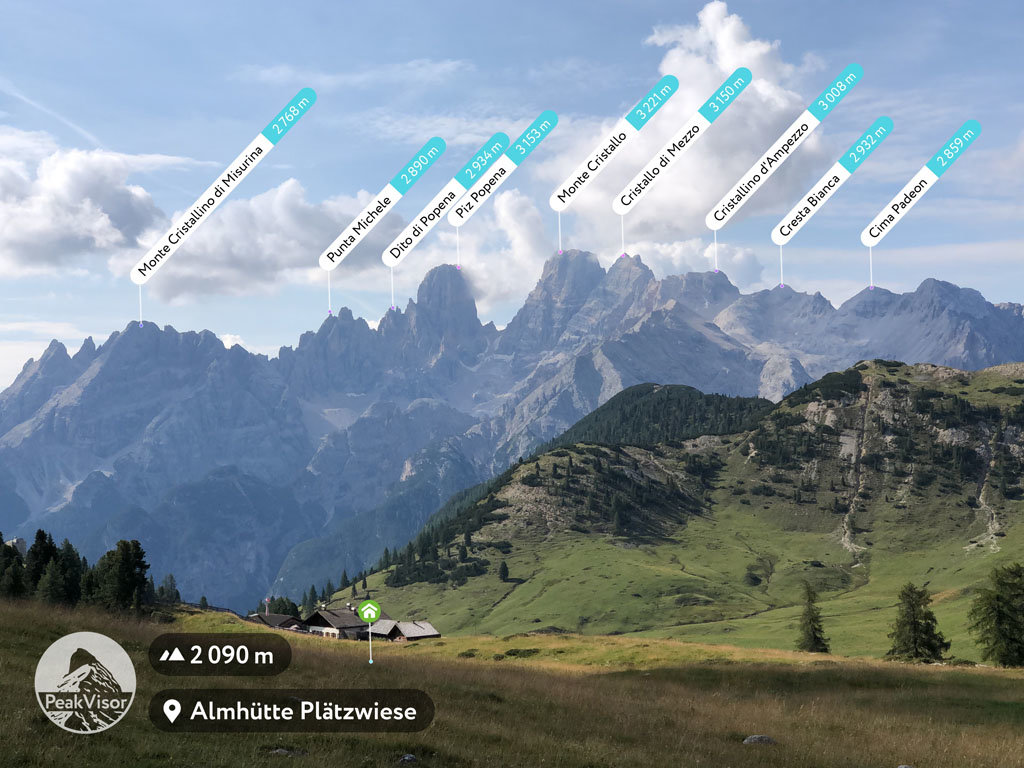
The Venetian Prealps are a distinct subrange of the Alps found primarily in Veneto. They range in elevation from lows of around 700 m (2,300 ft) to highs of around 2,200 m (7,200 ft).
In the Venetian Prealps, you can find cave formations, including sinkholes. One of the most interesting cave formations in the range is the Spluga della Preta, which is located close to Corno d’Aquilio in the province of Verona. The cave has an explored depth of 877 m (2,877 ft), making it one of the deepest caves in Italy. There are also many fossils that have been uncovered within the cave over the years.
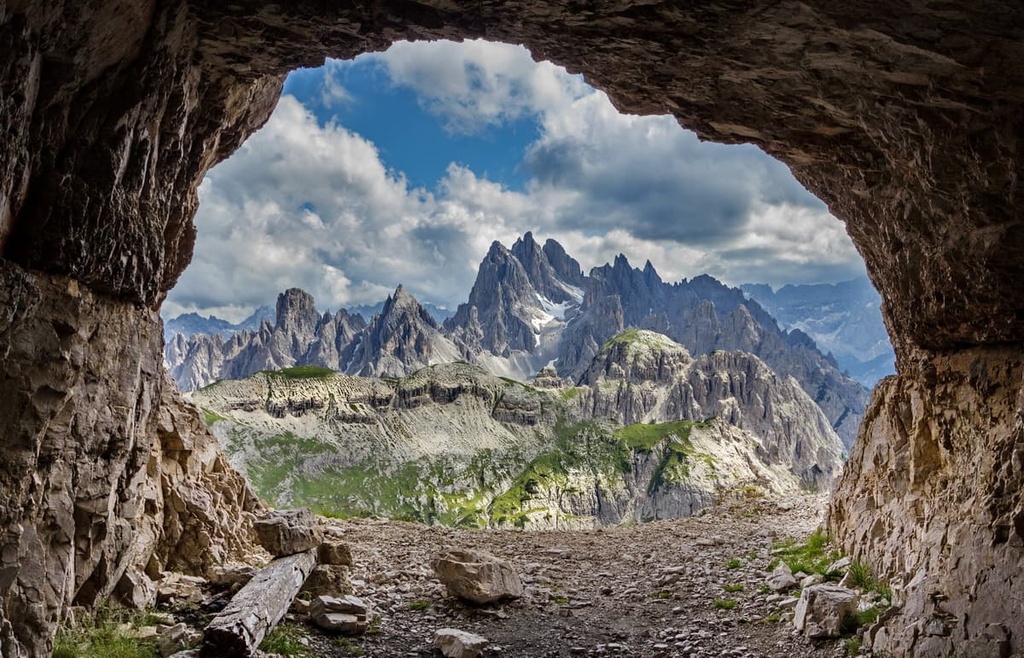
The plains, Veneto’s other distinguishing topographical feature, were formed by sedimentary action by the region’s rivers, including the Po in the south and the Adige, Brenta, Piave, and Tagliamento rivers in the north. The lower plain is characterized by sandy and silty clay deposits.
Veneto features a mix of landscapes from wetlands to mountain peaks. The flood plains of the Po Delta and the Venice Lagoon are both rich in vegetation and home to a variety of birdlife. The banks of the Piave River, which winds through the Prosecco Hills, provide nesting sites for herons and they serve as a rest stop for migratory birds that are passing through the region.
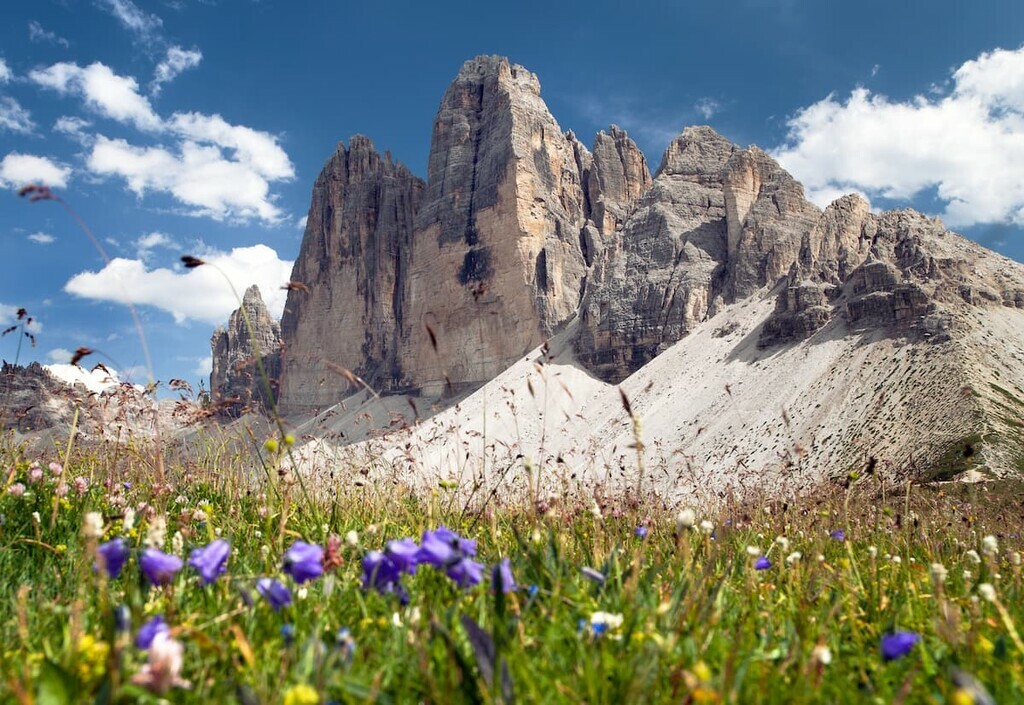
Here are a couple of the best places to experience the rich biodiversity of Veneto during a trip to the region.
Arguably one of the best places to explore Veneto’s rich biodiversity is in Dolomiti Bellunesi National Park, which is well known for its varied landscapes. There are more than 1,400 species of plants found in the park, most of which live on its high-elevation plateaus and meadows as well as within its many forests.
While in Dolomiti Bellunesi, you can walk amongst pines and spruces in the forests, which reach elevations of as high as 2,000 m (6,561 ft). In the spring, you can find a mix of Alpine flowers in the park, such as edelweiss, Alpine bellflower, Carniolan lily, and rock rampion, to name a few.
The fauna found in the park includes chamois, roe deer, marmots, stoats, mouflons, and martens, among others. Many bats live in the mountain caves of the region, and there is a rich variety of birdlife in the park, too.
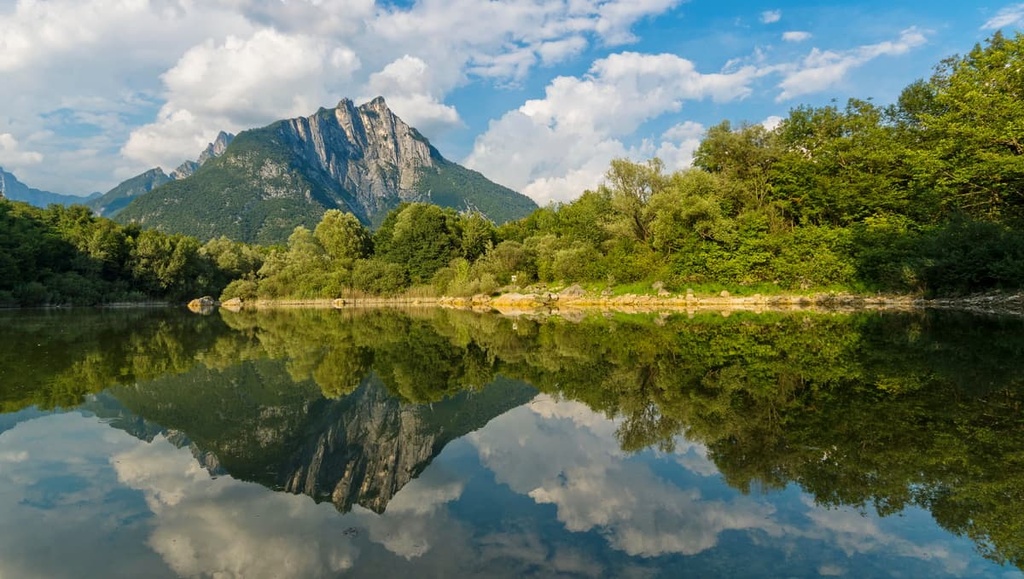
There are around 114 bird species that nest in the park, including the black woodpecker, wallcreeper, northern goshawk, kestrel, and even the golden eagle. Reptiles and amphibians such as the Alpine newt, mountain frog, and yellow-bellied toad also dwell in the rivers and lakes of the park.
In the Euganean Hills, which lie immediately to the southwest of Padova, you can explore oak, chestnut woods, and black locust tree forests. There’s also a surprising mix of flora in these hills thanks to the many microclimates that exist in this region.
Some of the plant species that live in the hills include scrub species, such as eastern prickly pear, rock roses, tree heather, and wild asparagus. In the hills’ meadows, juniper, dog rose, hawthorn, and blackthorn grow beside white oak, European hop hornbeams, and South European flowering ash trees. While hiking, you might also come across Paduan rue, one of the most important plant species in the Euganean Hills, as well as around 20 species of wild orchid.
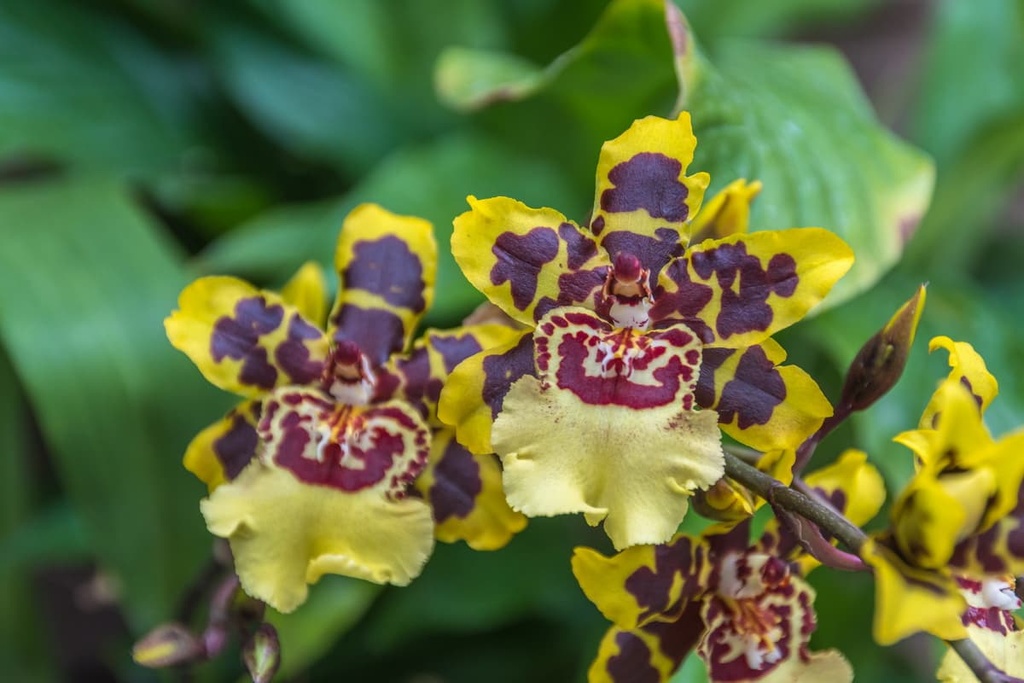
The hills are also home to different species of bats and birds, like the peregrine falcon, honey buzzard, common kingfisher, nightjar, and more. Foxes, weasels, martens, and badgers make the hills their home, too, as do deer and wild boars.
The region of Veneto has a long human history that dates back to well before the arrival of the ancient Romans.
The region takes its name from the Veneti, also referred to as the Paleoveneti, an Indo-European people who inhabited part of northeastern Italy in what is now Veneto. The Veneti’s culture reached a peak in the fourth century BCE as a result of their successful amber trading and horse breeding activities.
By the third century BCE, the region became part of the Roman Empire. As the inhabitants of the region slowly adapted to the language and culture of Rome, they were granted Roman citizenship. By the first century CE, Latin had displaced the Venetic language.
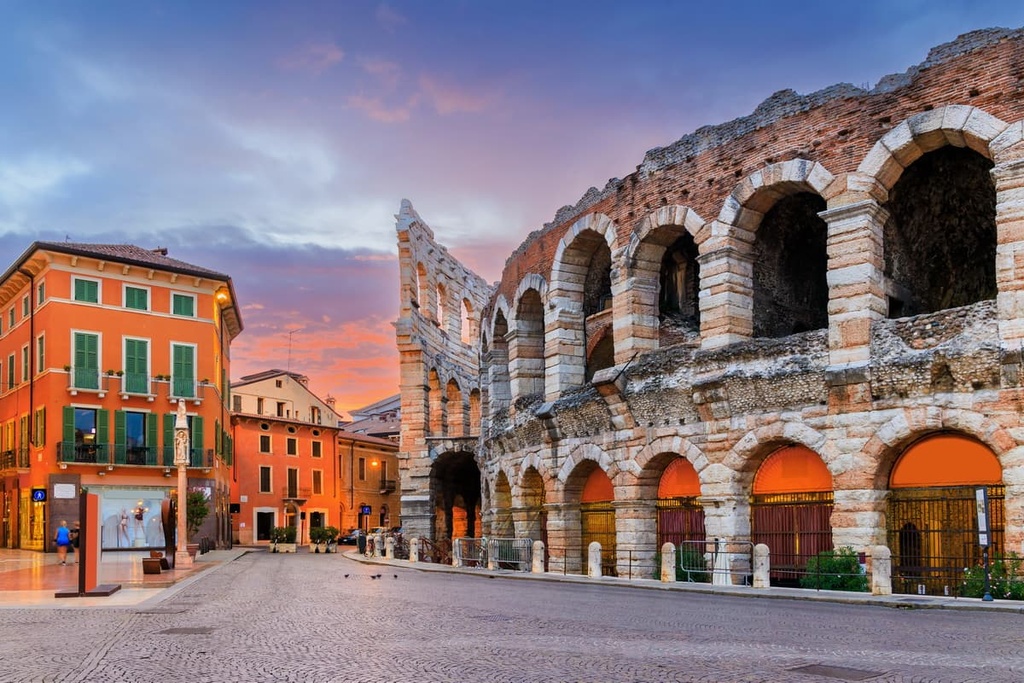
The region eventually fell to the attacks of the Lombards, Goths, Huns, and Ostrogoths in the fifth and sixth centuries CE. During these tumultuous times, the Veneti and inhabitants of surrounding settlements fled to the isolated and unoccupied islands of the Venetian lagoon. From here, the city of Venice was born.
The islands of Venice were difficult to invade due to the surrounding marshland. However, the Byzantines conquered Venice in the eighth century CE. After this period of domination, Venice became a maritime republic that was led by an elected doge.
The Venetian Republic became very successful economically due to its growing commercial industries. Its influence lasted well into the Renaissance, which is often referred to as the golden age of the Venetian Republic. This period was a time of great wealth, art, music, and culture in Veneto.
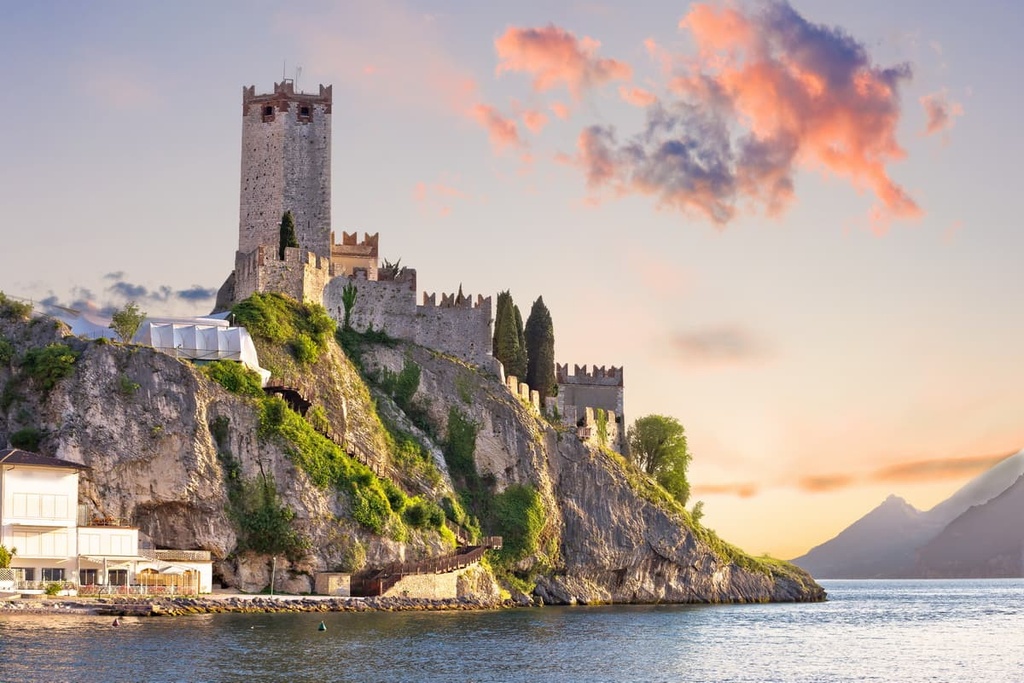
The Venetian Republic, also known as La Serenissima (Most Serene Republic of Venice), dominated trade in the eastern Mediterranean and Adriatic seas, which allowed it to control trade routes to Asia and Northern Africa. Merchants in the republic were known to trade anything and everything from spices and silk to wine and timber.
The republic maintained its control over the region until the Ottoman Empire grew in power and took control of the eastern Mediterranean. In 1797, Napoleon Bonaparte invaded Venice and brought about the end of the city-state. Venice and its territories were eventually given to Austria, where they were placed under Habsburg rule.
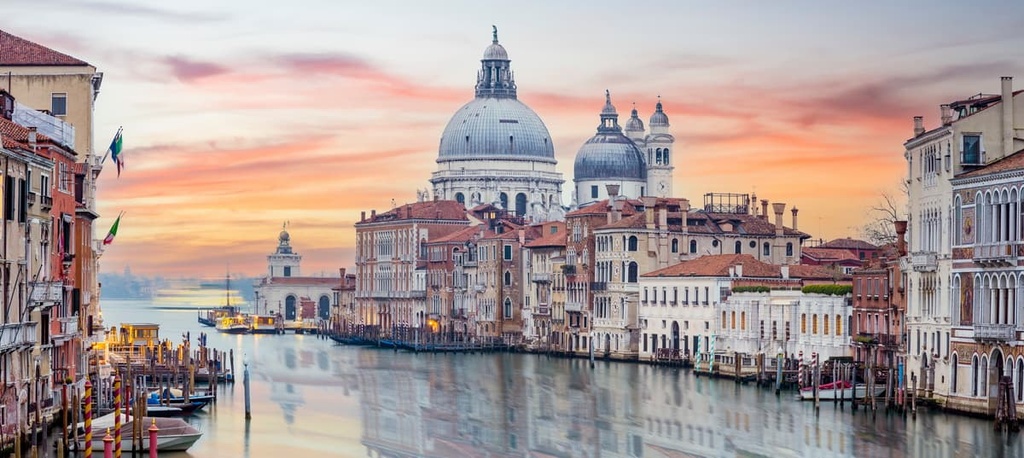
Veneto remained under the control of Austria until the Austro-Prussian war in 1866 when the Kingdom of Italy joined the Prussians and was promised Venice in exchange for its assistance. This led to the Third Italian War of Independence and once it ended, Venice was ceded to France in the Treaty of Vienna. The French then returned Venice to Italy shortly afterward.
During World War I, Veneto experienced some of the war’s most treacherous fighting in its mountain passes. The region was a major battlefront throughout the war. Many remnants of the war, such as forts, trenches, and tunnels, can still be found in the mountains today.
Venice is now a popular tourist destination. In 1895, the first-ever Biennale art exhibition was inaugurated, helping Venice to retain its reputation as a city of art and culture. The Venice film festival, one of the world’s oldest, is also part of the Biennale and is held every August.
The city is also home to a Peggy Guggenheim collection of artwork, which includes works from Francis Bacon, Picasso, Salvador Dalí, and Jackson Pollock, among many others. Venice is also the site of the annual Venice Carnival. The Venice Carnival traditionally ends on Shrove Tuesday and is best known for its elaborate masks and events.
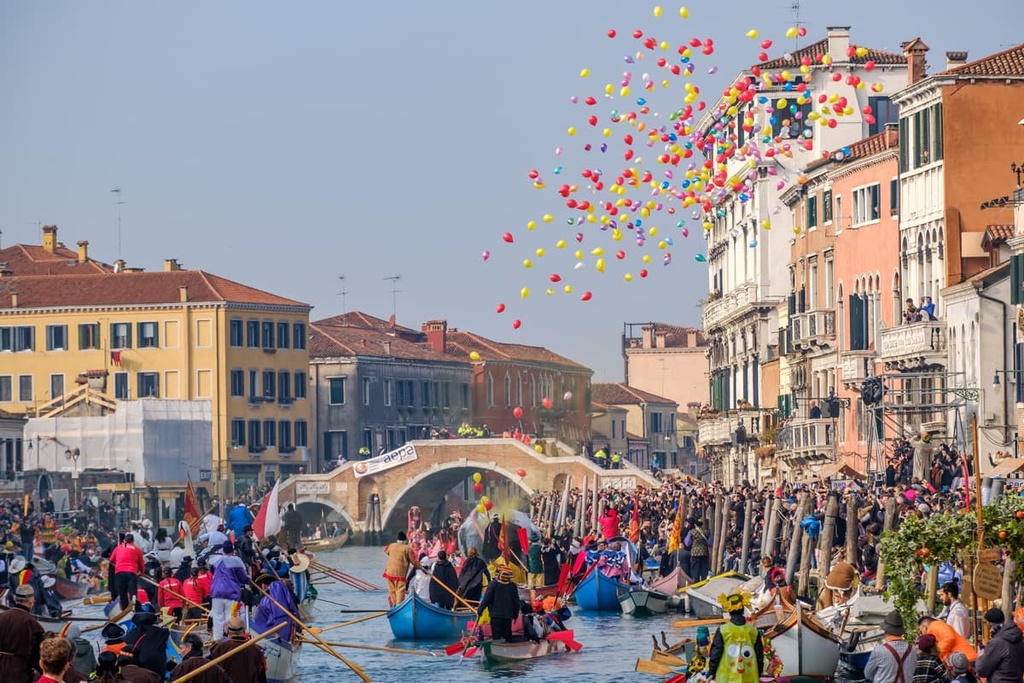
Nowadays, cruise ships that weigh more than 25,000 tons and have lengths of over 180 m (591 ft) have been banned from Venice’s lagoon to protect the city, which is slowly sinking and has serious issues with flooding. As a result of the large amounts of tourism that the city receives, many locals have moved away from Venice due to the high cost of living.
All of this tourism is transitioning Venice away from its status as a living city and is making it more of a living museum. The local government is considering a number of strategies to combat the issues that come with high tourism and emigration from the area, including plans to add a visitor fee to access the city.
Nevertheless, tourism is one of the region’s main economic resources. In fact, around one-fifth of international tourists to Italy travel to Veneto each year.
Veneto’s other economic resources include agriculture, specifically market gardening, fruit-growing, wine-growing, and dairy farming. Important wines that are produced in the region include Prosecco, Valpolicella, and Amarone di Valpolicella.
Veneto is also home to many small and medium-sized businesses in the food, wood and furniture, leather and footwear, clothing, gold jewelry, chemistry, metal mechanics, and electronics industries.
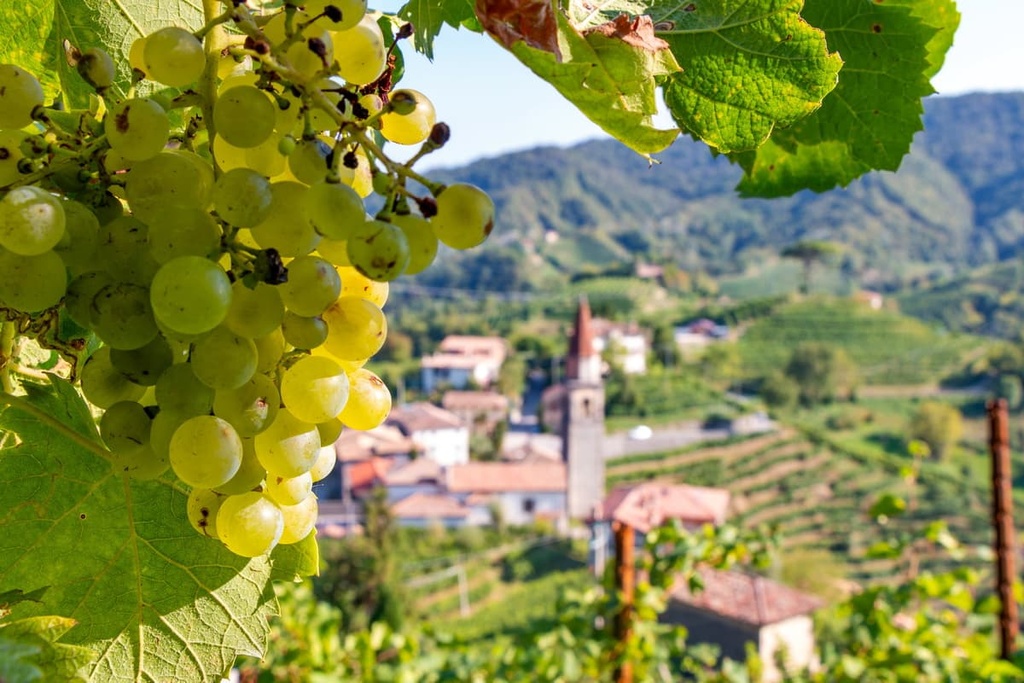
The fashion industry is also prevalent in Veneto. Many companies and well-known brands, such as Benetton, Bottega Veneta, Geox, Diesel, Calzedonia, and Moncler, have headquarters or production facilities in the region.
That being said, over the last 20 years, many Venetian companies relocated their manufacturing plants to Eastern Europe, especially to Romania. In particular, the Romanian city of Timișoara, which is home to many of these Venetian production facilities, is referred to as “the newest Venetian province.”
Veneto offers visitors an exciting mix of hiking opportunities, from the jagged peaks of the Dolomites to the Prosecco Hills. Here are some of the best places to enjoy a hike during your next trip to Veneto.
With over 200 km (124 mi) of marked trails, Dolomiti Bellunesi National Park is a haven for hikers and outdoor enthusiasts. You can find a mix of loop routes, nature trails, and multi-day trips in the park.
Trails in the park range from mule tracks to forest roads, and there are plenty of via ferrata to enjoy, too. There’s something for everyone to appreciate in the park, from gentle paths that are perfect for families to technical hikes, via ferrata, and historic sport climbing routes. Many of the hikes in the region will take you into the depths of the park where you can appreciate its rich landscape.
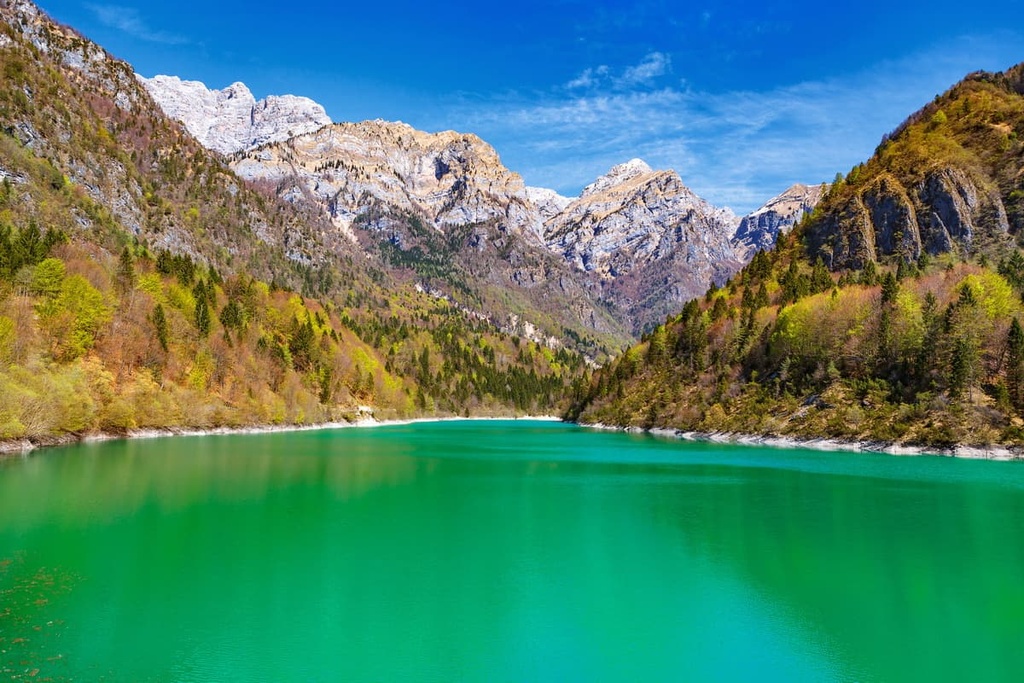
Located just to the north of the popular ski resort town of Cortina d’Ampezzo and close to the regional border with Trentino-Alto Adige, Dolomiti d’Ampezzo Natural Park is a protected area that encompasses the heart of the Eastern Dolomites. In this tranquil setting, you can experience the park’s green valleys, dense woodlands, serene lakes, and roaring waterfalls.
While in the park, you can hike or bike along the region’s vast trail network, which boasts more than 300 km (186 mi) of paths. On these paths, you can encounter typical mountain fauna such as ibex, chamois, woodpeckers, and even golden eagles. You can also find eight different via ferrata routes, some of which follow the remains of mountain roads that were used by troops during World War I.

The 10 km (6 mi) trek around Tre Cime di Lavaredo is an iconic hiking route in the Dolomites. This route circles around the three rocky spires of Tre Cime di Lavaredo and offers breathtaking views along the way. The path is generally regarded as moderate in difficulty, so it’s accessible to most intermediate-level hikers.
As you walk on this trail, you can enjoy views of the mountain’s jagged peaks and peaceful lakes. You can also pop into a rifugio for a well-deserved meal along the way. This route starts and ends at the famous rifugio Auronzo, too, so it’s relatively easy to get to from the surrounding region.
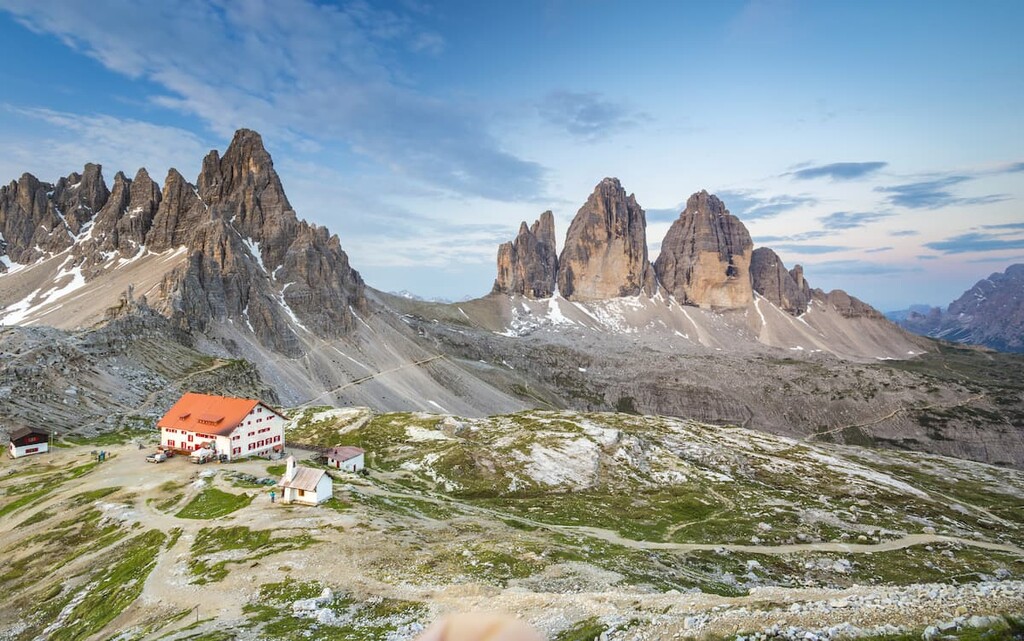
Set in the foothills of the Dolomites and located just an hour from Venice are the Prosecco Hills. These aptly named hills feature vine-covered slopes that grow grapes for Italy’s best-known sparkling wine—Prosecco. The hills are also referred to as the Conegliano and Valdobbiadene hills, but they are more commonly called the Prosecco Hills.
While in the hills, you can hike along the 15 km (9 mi) long Prosecco Superiore Ring, a historic nature trail. This trail takes you through ancient terraces, and it gives you a chance to stop at the many wineries that are located in the region if you want to sample some of the local fizz. The route starts and ends in San Pietro di Barbozza.
You can also opt for the Vedette Trail while in the Prosecco Hills. The name of this trail translates roughly to the “Lookout Trail,” which is a reference to its use by the Austro-Hungarian Army in World War I as an observation point on the Piave River. There are still some remains of war shelters and trenches that you can see along the path.
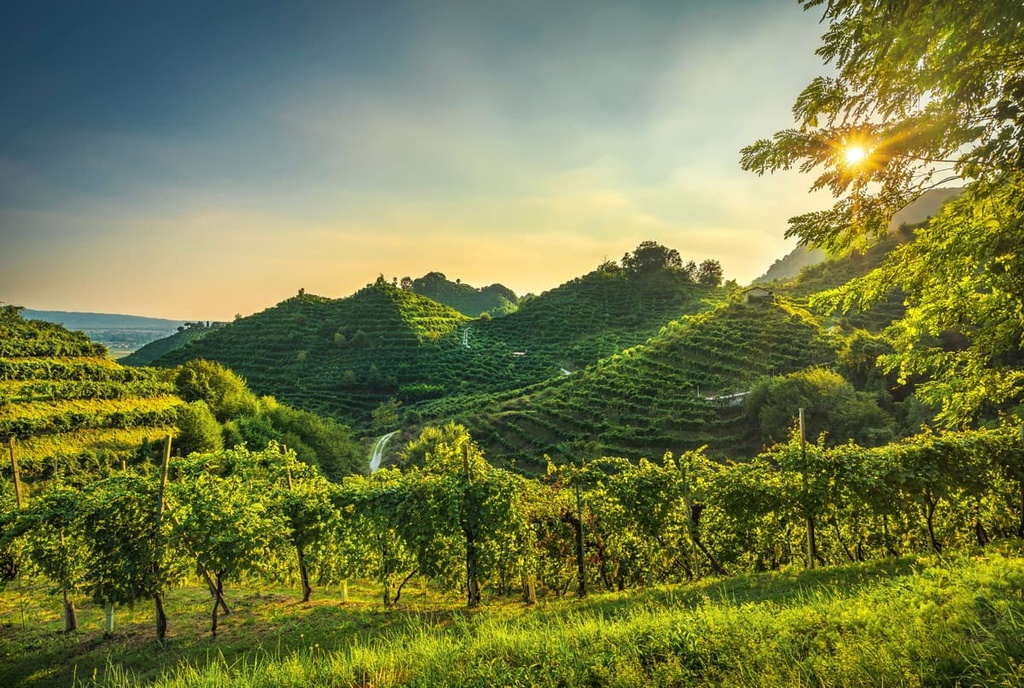
This route connects Col San Martino with Soligo. It follows the summit ridge and offers views out over the region’s numerous vineyards. This hike is about 16 km (9 m) in length and it has about 700 m (2,296 ft) of elevation gain.
There are several hiking routes that take visitors through Veneto’s Euganean Hills. Here, you can experience the region’s woodland flora and see the remains of World War II forts and trenches.
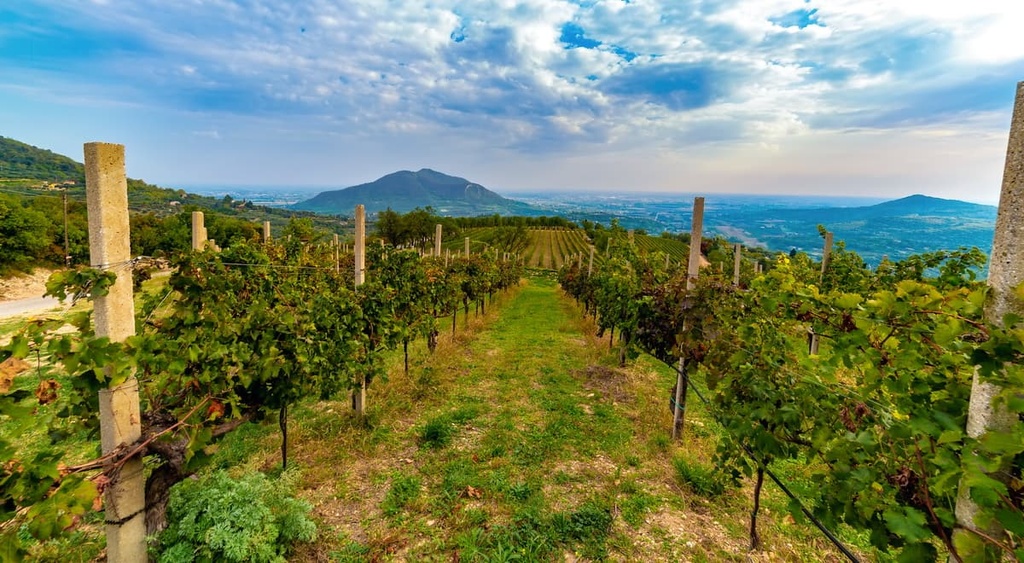
While hiking in the Euganean Hills, you can admire the views that the range offers over the surrounding area. On some days, you can even look out over the eerie fog-covered Po Valley from the Euganean Hills, too.
For skiing and snowboarding enthusiasts, there are more than 25 ski resorts in Veneto. They are located on the west and north of the region in the Venetian Prealps and the Dolomites, respectively, which makes it also one of the main areas for skiing in the Italian Alps in general.
The largest ski resort in Veneto is Cortina d'Ampezzo with more than 120 km (75 mi) of slopes and more than 25 ski lifts. In 2026, the resort will host the Winter Olympics for the second time in the history of the games (the first was in 1956), part of which will also be held in Milan for sports like hockey, and others.
Other major areas for skiing in Veneto with more than 50 km (31 mi) of slopes and more than 10 ski lifts each include Civetta, Arabba-Marmolada, Passo San Pellegrino/Falcade in the Dolomites, as well as Alpecimbra Folgaria Fiorentini in the Venetian Prealps.
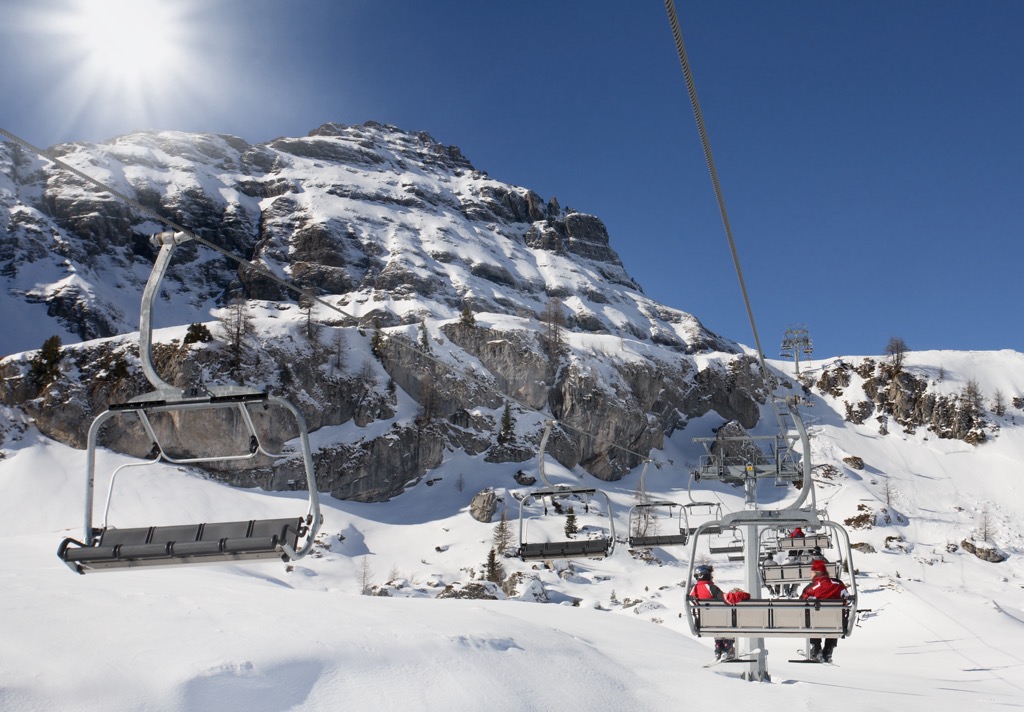
The main ski resort near Venice is Alpe del Nevegal to the east of the city with more than 20 km (12 mi) of slopes and more than 5 ski lifts and LeMelette–Gallio to the west of the same size. The main ski resort near Verona is a small Monte Baldo–Malcesine/Prà Alpesina with more than 10 km (6 mi) of slopes and more than 5 ski lifts overlooking the famous Garda Lake.
Check the Veneto ski resorts map as well as the larger Italy ski resorts map in the World Mountain Lifts section of the site. It includes information about open ski lifts / slopes in Veneto in real-time with opening dates and hours. There are also year-round cable cars, funiculars, cog railways, aerial tramways, and all other types of mountain lifts.
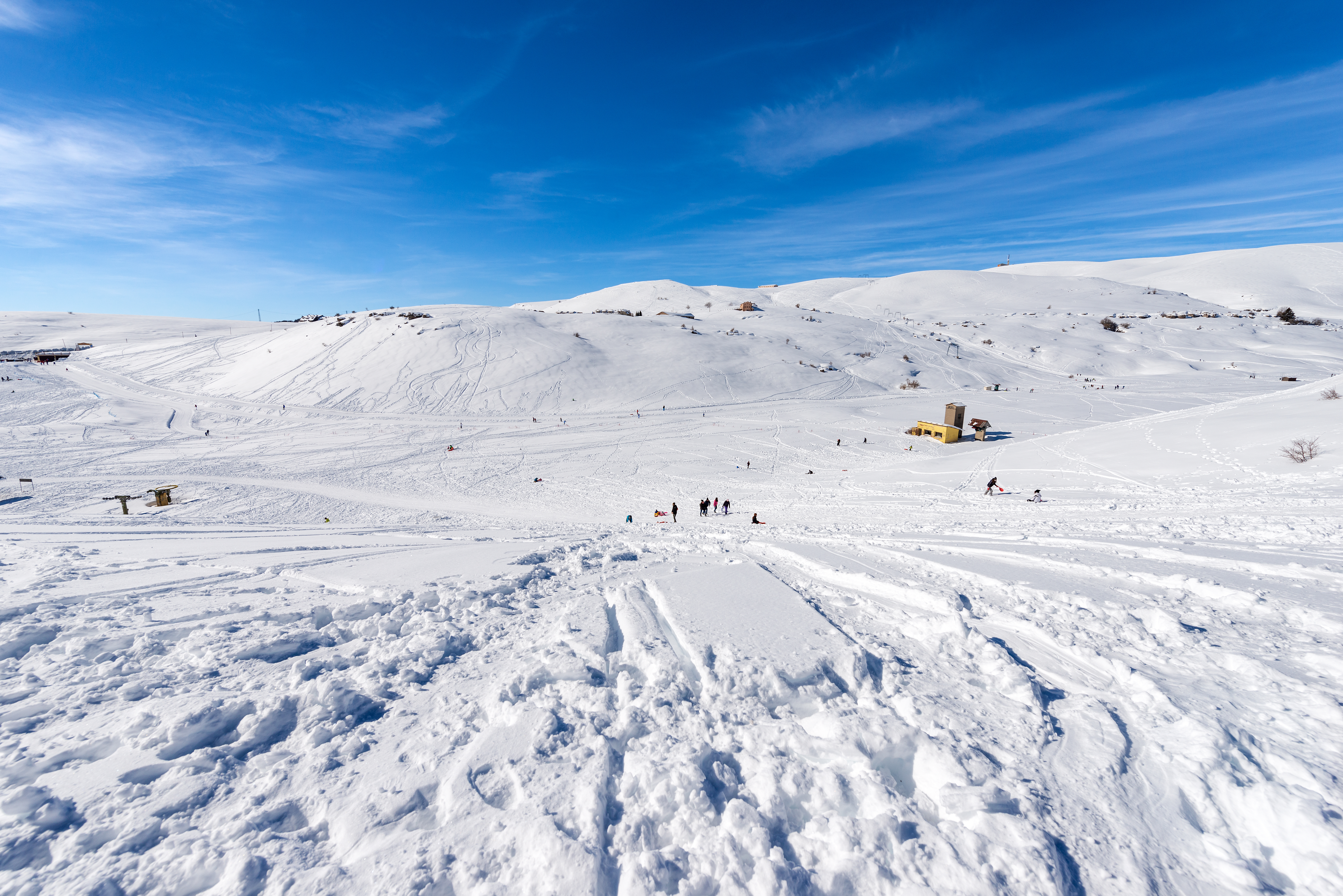
As one of Italy’s most popular tourist destinations, Veneto has no shortage of places to visit and cities to stay in during your travels. Here are some of the best places to check out when planning a stay in Veneto.
Set against a beautiful mountain backdrop, the city of Belluno is the gateway to the Dolomites and the Venetian Prealps. The city is just a stone’s throw from Dolomiti Bellunesi National Park and the nearby Dolomiti Friulane Natural Park, so there’s plenty of hiking available on your doorstep if you choose to stay in Belluno.
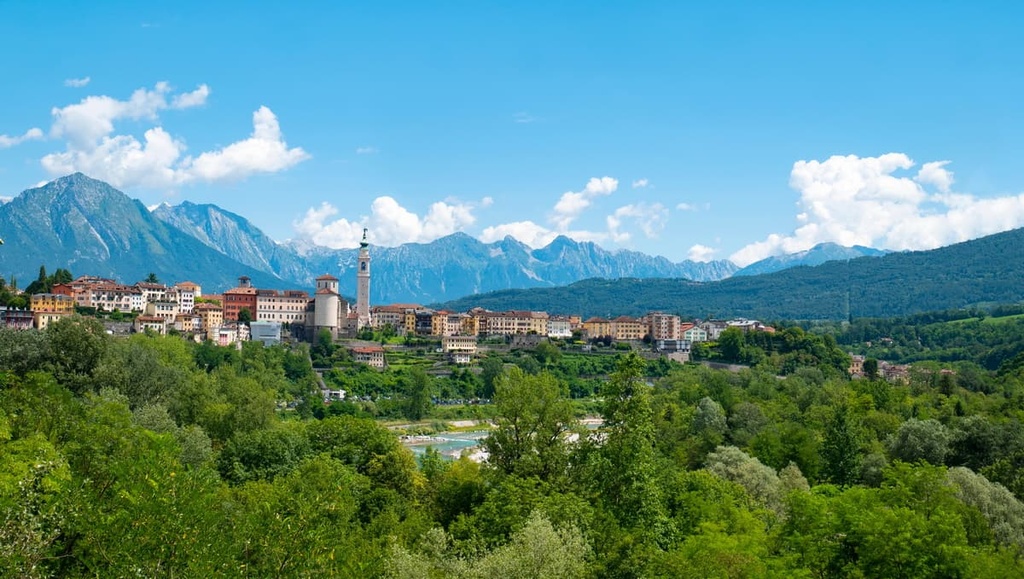
The city itself is worth a visit in its own right. While in Belluno, you can visit the Piazza del Duomo, which is dominated by the Cathedral di San Martino and its bell tower. The most interesting building in the square is Palazzo dei Rettori, which dates back to the fifteenth century and was used as the town hall in medieval times.
When visiting Veneto, a stop in Venice is an absolute must. There’s so much to enjoy in Venice just by strolling around and getting lost in the labyrinth that is the city. While in Venice, be sure to stop by the city’s hotspots, such as St. Mark’s Basilica, the Rialto Bridge, the Grand Canal, and the Bridge of Sighs.
During a trip to the city, you can take a boat to Venice’s Lido and the islands of Murano or you can hop across the Grand Canal to San Giorgio Maggiore. You may also want to time your trip so that you can visit the Venice Biennale, film festival, or the Venice Carnival. Or, you can simply pop into the city for a day trip before heading up to the mountains.
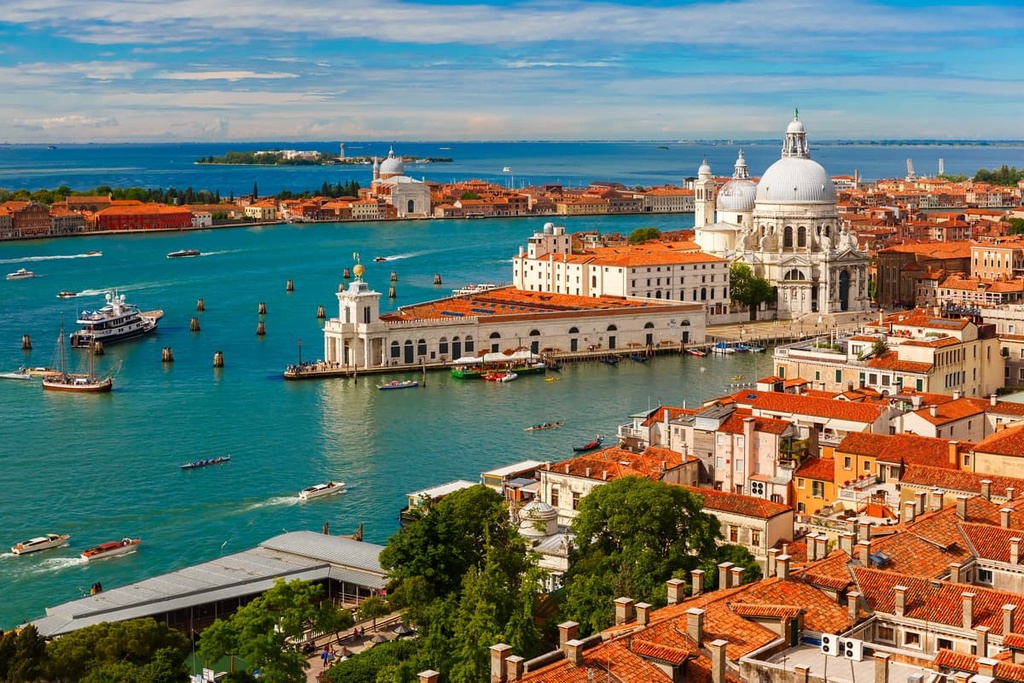
Verona is another popular city in Veneto, and it serves as a great base if you’re planning to visit Lake Garda. The city has the largest collection of Roman remains in Veneto, which includes the must-visit Arena di Verona.
During a trip to Verona, you can walk around the city and take in some of its main sites. Popular destinations in Verona include Castle Vecchio, Castle Vecchio’s bridge, Basilica di San Zeno Maggiore, Piazza delle Erbe, and Juliet’s Balcony.
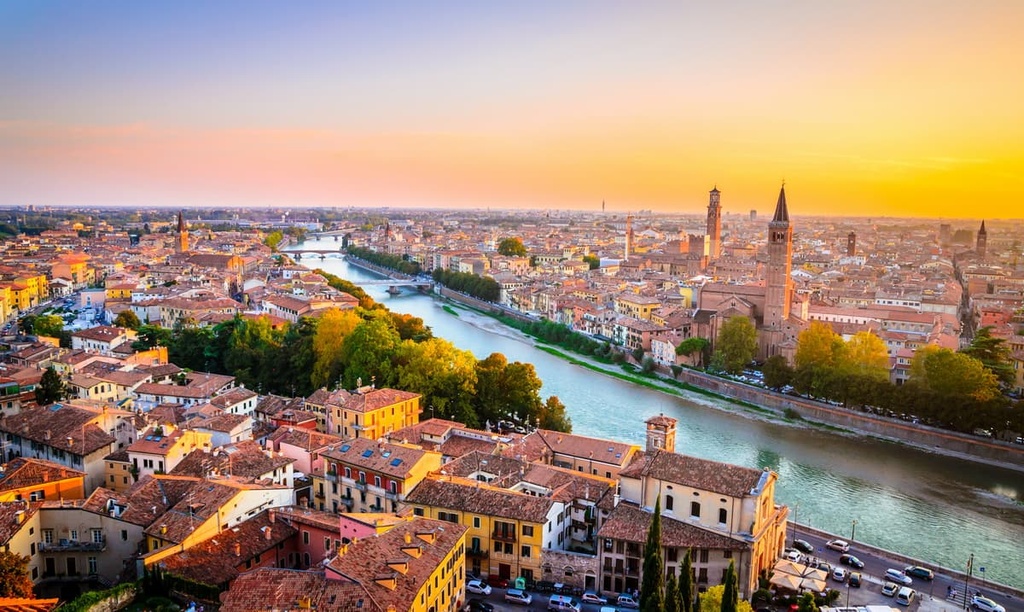
Also known as “little Venice” thanks to its many canals, Treviso is a beautiful city to visit during any trip to Veneto. In Treviso, you can walk through the city’s narrow streets and visit the Treviso Cathedral.
During a trip to Treviso, you can also check out the city’s ancient walls and gates, and walk along the city’s canals. Plus, from Treviso, you can easily reach the Prosecco Hills, as well as Dolomiti Bellunesi National Park

As it is situated close to the Euganean Hills, Padova is another great place to stay if you’re traveling to Veneto. In Padova, you can visit the Duomo Cathedral and the Basilica di Sant’Antonio, and you can walk along the city’s canals.
Padua is also home to two UNESCO World Heritage Sites: the Cappella degli Scrovegni and the Orto botanico di Padova (Padua Botanic Gardens), the latter of which was founded in 1545. The city’s University of Padua is also one of the world’s oldest institutions of higher education as it was established in 1222 by students and professors from the University of Bologna.
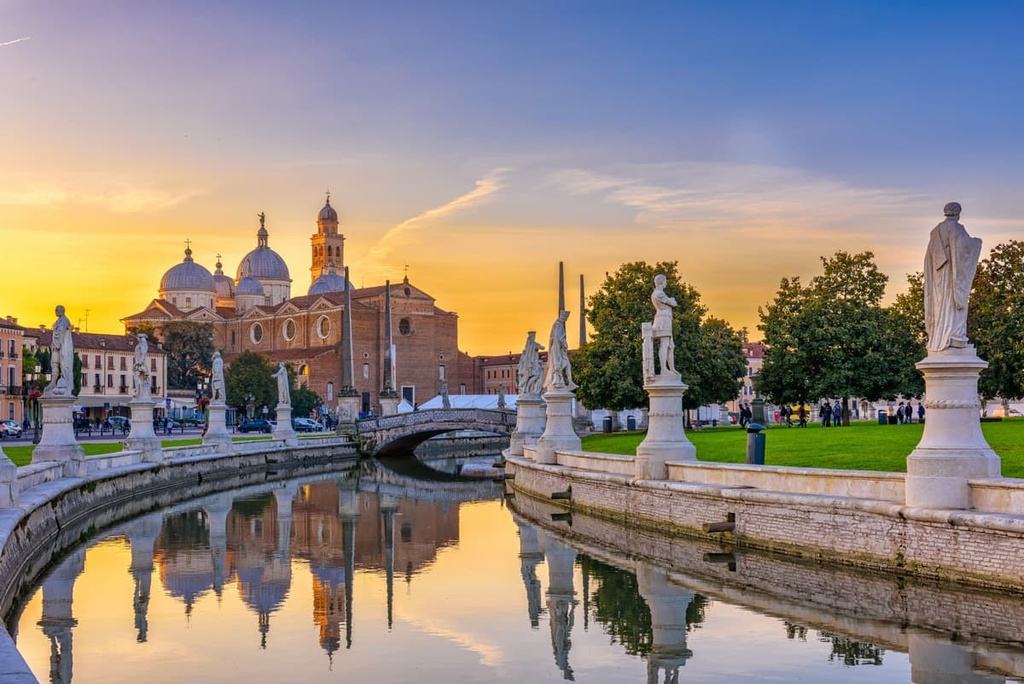
Explore Veneto with the PeakVisor 3D Map and identify its summits.
